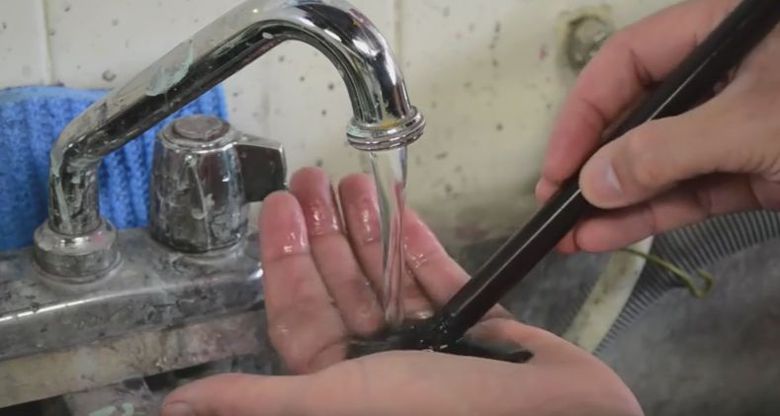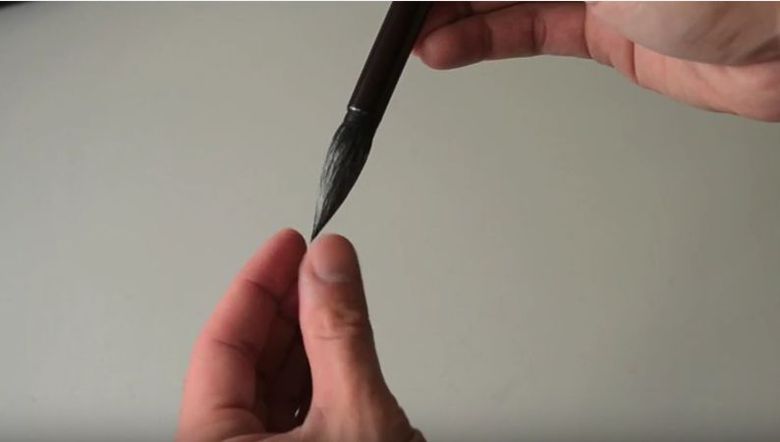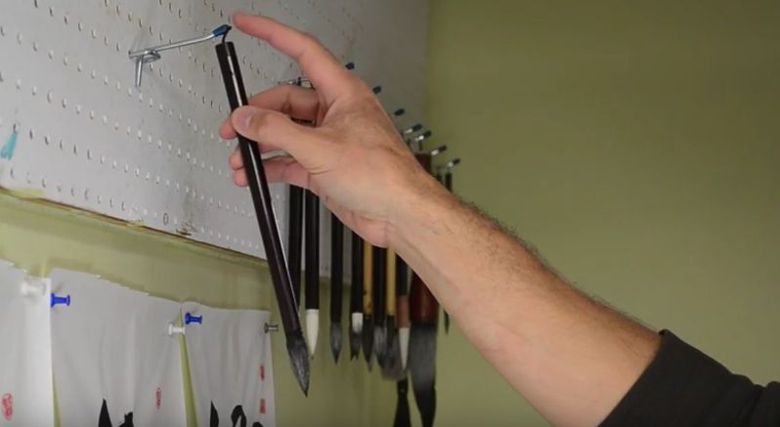Brush Usage
Brush Cleaning To clean, gently wash brushes after use by swishing them around in a jar of cool water or under a cool faucet. Do not use warm water or soap, as they dry out the natural oils in the brush hairs and may dissolve the glue that holds the hairs inside the handle.
Shake any excess water from the brush. Dry the handle and ferule and "Dress" the brush by wiping it against a paper towel or between your fingers to bring it to its original shape. Make sure the hairs are straight.
Brush Drying & Storage Brushes should be dried in a suspended vertical position with tips down. Ron Mello brushes will all have built-in hangers or loops at the end of the handle to facilitate drying.
The wooly quality of many hairs used in handmade brushes are very appealing to moths and other insects. As a result, brushes which are not used regularly should be stored in moth balls or cedar chips. The most vulnerable and difficult to wash is the base of the tuft (see picture 1), i.e. the place where the hair is mounted inside the brush handle. This part of the brush is where the ink dries out much faster, and it takes time to wash it off. As shown in the picture 1, by the brush should be washed by gently rinsing and taping the brush tuft under running cold tap water without applying excessive force. To allow the tuft to sponge more water inside the part known as "the stomach", you can fold a palm of your hand into a scoop, and tap and gently swirl the brush inside a shallow pool of water. Brush is clean when the water squeezed out from the brush is clear. Depending on the size of the brush, washing can be quite time consuming. Washing of large or long tipped brushes will take longer to clean. Once the brush is washed, the brush tuft should be formed into a perfectly round and pointy spear. Make sure that the hair is neatly arranged. Finally, the brush handle needs to be dried with a cloth, and hung on a brush hanger, tuft down. |


